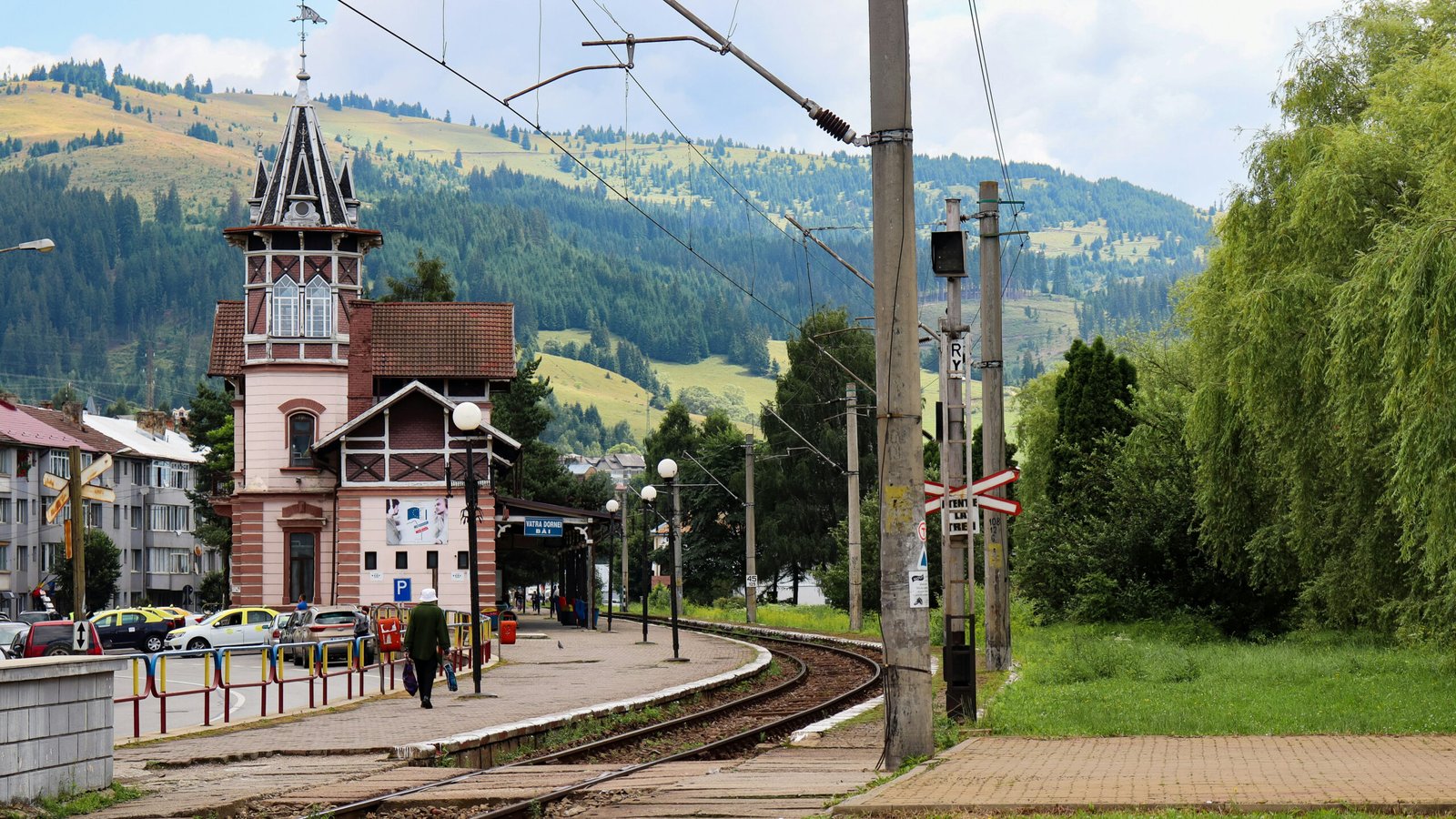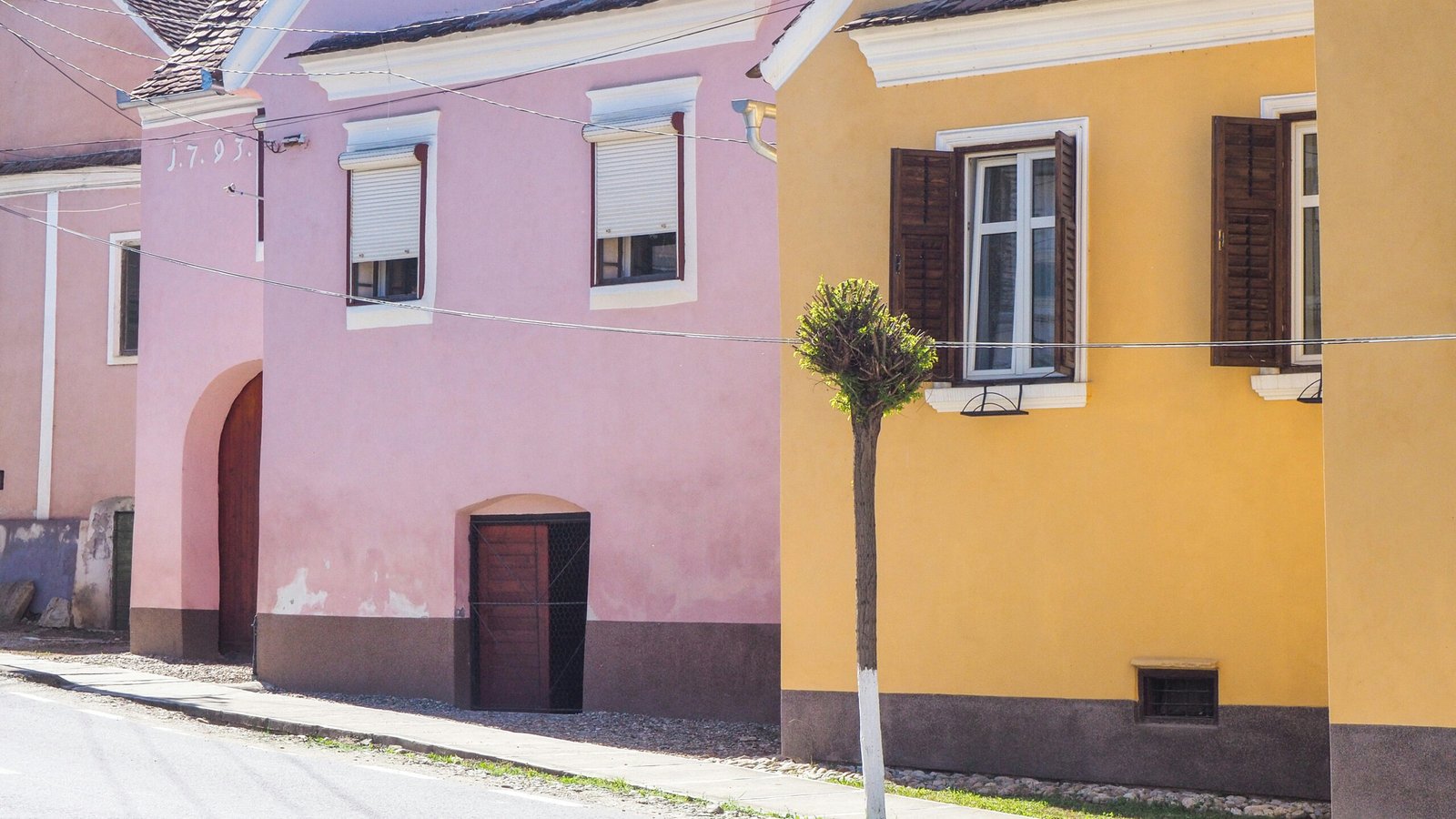
Understanding Romania’s Four Distinct Seasons
Romania experiences all four seasons, each with its own rhythm and feel.
Winters can be snowy and magical, especially in the mountains.
Summers are warm and lively, perfect for exploring villages or seaside towns.
Spring and autumn often offer the best of both worlds with milder weather, fewer crowds, and lower prices.
Still, the best time to visit Romania depends on where you’re going and what you’re hoping to experience.
If you’re like me, and you prefer to visit places off season with fewer crowds, then I would lean towards Autumn and Spring, but I’ll share my reasoning.

January: Winter Silence and Mountain Snow
January is cold across the country, with temperatures often dipping well below freezing.
In the Carpathians, snow blankets the hills, and ski resorts like Poiana Brasov (Brașov) are in full swing which makes this the best time of year if you are interested in taking advantage of the amazing winter sports that Romania has on offer.
It’s a quiet month for tourism outside the mountains, and cities like Bucharest feel hushed, and rural villages move at a slower pace.
But for winter sports or a peaceful retreat, this is your month to visit, and pack warmly.
February: Still Winter, But Full of Tradition
February stays wintry, especially in Transylvania and Maramures (Maramureș).
Snow lingers, and smaller ski resorts remain open. Crowds are minimal, so it’s a good month for travelers who prefer calm.
Locally, traditions begin stirring in late February as preparations for Mărțișor (1 March) begin.
It’s a subtle but charming moment to witness Romanian cultural rhythms emerging from winter.

March: Spring Awakens Quietly
March brings the first signs of spring, though snow may still be present in the mountains.
In the cities, flowers appear in parks and markets, and the mood starts to lift.
Mărțișor (celebrated on 1 March) marks the symbolic start of spring. Red-and-white threads are exchanged and worn for luck.
While the weather remains unpredictable, it’s a meaningful time to visit, and is a great time of the year to see the countryside start to come alive after winter.

April: Blooming Villages and Warmer Days
April warms the air, especially in southern Romania and along the Danube.
Fields begin to green, and village life becomes more visible.
Orthodox Easter, often in April, is one of Romania’s most important holidays and if you get the chance to visit Romania during this time, take it.
Cozonac, an amazing sweet bread made with nuts and cocoa is available everywhere this time of the year, and the festivities and traditions are in full swing.
If your visit coincides with Easter, expect candlelit processions and red painter eggs. It’s a deeply rooted cultural experience.

May: Green Hills and Long Days
May is among the best months to visit Romania whether you are visiting cities or countryside.
Nature is lush, temperatures are pleasant, and tourist crowds remain on the lower side.
It’s an ideal time for hiking in places like the Apuseni Mountains or exploring castles in Transylvania where the temperatures are still cool.
Rural festivals begin to pop up, and guesthouses reopen for the season, and you can start to feel the change of pace as businesses start to ready themselves for the busier days ahead.
June: A Quiet Start to Summer
June offers warm weather without the intense summer heat, in most parts of Romania.
Lavender fields begin to bloom, and roads are clearer before the high season hits.
It’s also a great time to visit Bucharest, when the city’s parks and café culture are at their best.
If you’re wondering when is the best time to go to Romania without the rush, June is often overlooked but rewarding, and I highly recommend it.

July: High Summer, High Energy
July is hot and lively.
It’s one of the busiest months for tourism, especially in Brașov, Sibiu, and coastal towns like Constanța.
If you’re planning to visit the Black Sea or attend festivals like Electric Castle near Cluj Napoca, book well in advance.
While crowds grow, so does the energy. It’s the peak of Romanian summer and it will be hot, so expect to pack lighter clothing.
August: Heat, Harvest, and Holiday Crowds
August can be very hot, particularly in the south of the country.
Mountains and forests offer a cooler escape, and festivals continue throughout the month.
In villages, it’s the beginning of harvest time. Markets overflow with fruit, tomatoes, and herbs.
It’s the best time to visit Transylvania for warm weather hikes, forest trails, and rural charm at full tilt, but is still a busier month, so for most tourist attractions, it is smart to book or plan ahead.
September: Gold Light and Fewer Tourists
September brings relief from summer heat and a more relaxed pace. It’s personally one of my favorite months to visit, where the days are still long, and the evenings are still war.
The evening light takes on a golden hue, perfect for photography and relaxing on a cafe patio.
It’s harvest season in vineyards like Dealu Mare or the hills near Alba Iulia.
If you’re wondering the best time to visit Romania for balanced weather and low crowds, September ranks high.

October: Fall Colors and Cultural Calm
October is Romania in soft focus.
Trees blaze red and orange, especially in Transylvania and Bucovina. It’s one of the best times to visit Bucharest or take road trips through the countryside.
Many guesthouses stay open through the month, and the mood is reflective—warm days, cool nights, and fewer visitors.
Expect some rain showers, as this is typically the start of the rainier season, especially in the mountains or in the north west of the country.
November: Off-Season with Quiet Beauty
November is the calm before winter.
Temperatures drop, and daylight fades, but foggy mornings and rustic landscapes give a poetic feel well worth experiencing.
For cultural travelers, it’s a good time to visit museums or cities like Iași, known for literature and calm city life.
Prices are lower, and crowds disappear, so if you plan to see tourist attractions or museums that are mostly indoors, then this may be your month.

December: Festive Lights and Cold Nights
December brings crisp air, holiday markets, and traditions tied to Crăciun (Christmas).
Villages in Maramureș feel timeless, with wooden churches lit by lanterns and folk carols echoing in the hills.
Bucharest and Sibiu host Christmas markets filled with mulled wine, crafts, and lights which rival Germany’s Christmas markets.
If you don’t mind the cold, it’s among the most atmospheric months of the year, but pack warmly, and be ready for the rain or snow.
Choosing the Best Time to Visit by Region
Romania’s regions vary in climate and appeal.
The best time to visit Transylvania might differ from that of the coast or capital.
Transylvania is best in May, September, and October when you can expect cooler air, vibrant foliage, and fewer tourists.
Bucharest shines in spring and early summer, while the Black Sea coast peaks in July and August.
Final Thoughts – What Do You Want from Your Trip?
The best month to visit Romania depends heavily on what you’re after.
Do you want snowy mountains, summer festivals, or fall hikes through quiet hills?
Each season tells a different story and the key is knowing what pace and atmosphere suit you best, and letting the calendar guide the rest.
I have yet to experience a bad time to visit Romania, but I have found that there are better months to visit depending on what I want to experience.









Leave a Reply